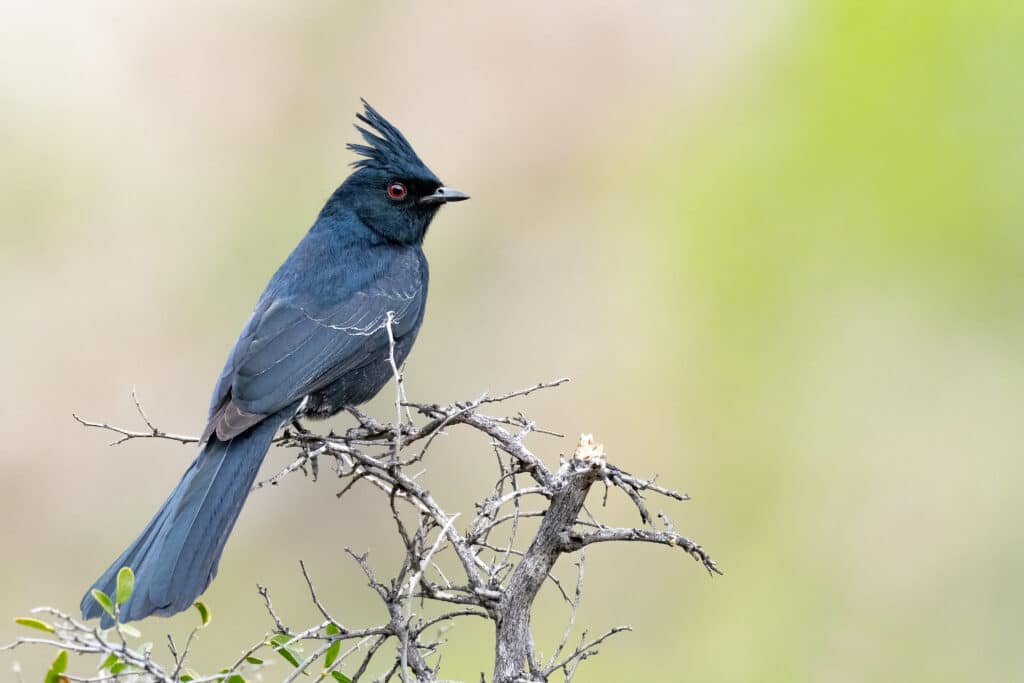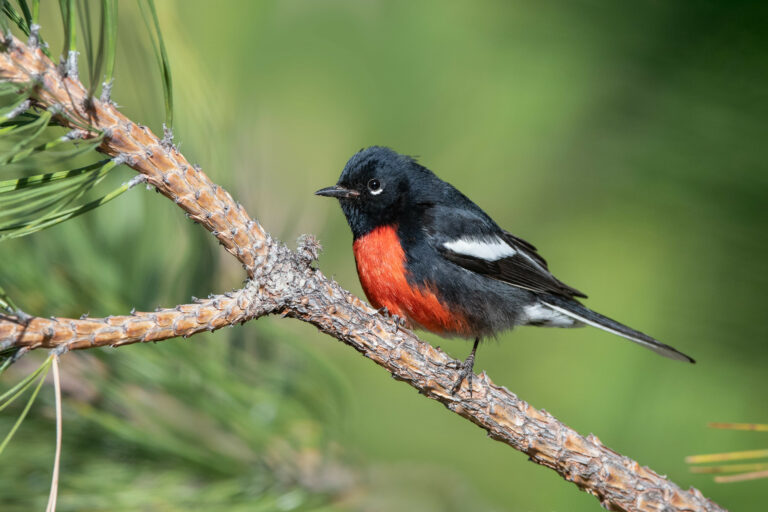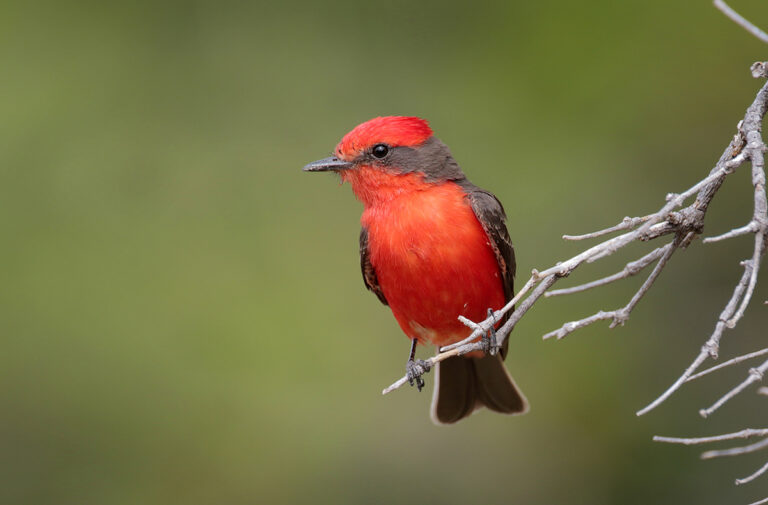The Phainopepla’s questioning “wurp?” call is a common sound in desert habitat in and around Tucson. With the male’s handsome, glossy black plumage (inspiring its Greek name meaning “shining robe”), flashing white wing patches, and ragged crest, this silky-flycatcher is often described as a ‘black cardinal with a red eye.’ The matte, slate gray female is quite beautiful in a more understated way.
Phainopeplas are unique among North American birds in that they breed in two distinct habitats at different times of the year, and also have differing social strategies at each. They spend the winter in Sonoran Desert habitat, fiercely defending clumps of native mistletoe (their preferred food and nesting sites) in palo verde and mesquite trees before the spring breeding season. When temperatures rise and mistletoe berries dwindle, Phainopeplas leave the desert and gather in nearby riparian areas or higher elevation oak woodlands (such as Madera Canyon) for the summer. The breeding birds at these woodland sites are less territorial, nesting in loose colonies of 3–15 pairs, and have overlapping home ranges.
Of course, the Phainopepla’s unique behavior has led to speculation that the same individuals may breed in both habitats each year. However, more scientific study is needed, and it remains unclear if the same birds breed in both desert and woodlands.




